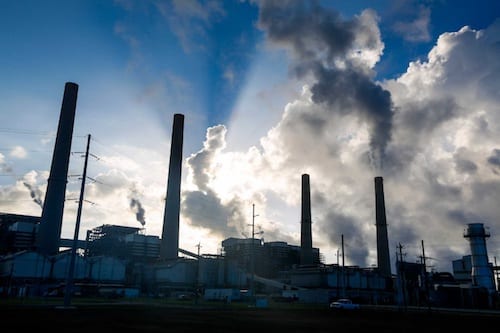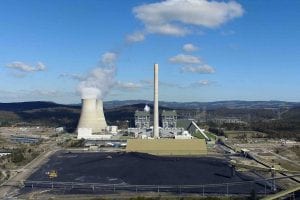There are many options to manage the energy transition that don’t involve capacity payments.
Uncertainty in the National Electricity Market is driving investment risk.
The uncertainty is driven by high levels of uncertainty around coal exits, short term market contracting, early mover disadvantage in power technologies subject to deflation, and unpredictable government intervention, among other things.
The Energy Security Board’s capacity mechanism has been proposed as a solution to these challenges. It involves paying generators not for producing electricity, but for being able to prove they are available in certain periods of the year when there is a risk of an energy supply shortage.
Dubbed ‘CoalKeeper’, the capacity payment won’t address investor uncertainty facing the national electricity market, as it will only push the coal exit uncertainty problem further into the future through providing payments to the ageing generators.
It also will not lengthen contracting terms, does nothing to address early mover disadvantage, and does not address the underlying challenges in the market which are driving government intervention.
Many more options exist to manage the closure of ageing coal generators and replacement with new, low emissions resources, as detailed in a recent IEEFA report.
One option is a ‘race to replace’ concept. This involves linking up the closure of ageing coal generators with the entry of new replacement capacity such that if replacement capacity is built then ageing high emission generators are guaranteed to retire.
For example, the government could specify that once 1000 megawatts (MW) of dispatchable capacity (satisfying specified criteria to ensure it was reliable) was built in a given location, then 1000MW of coal will be retired.
This would substantially improve investment certainty for entering generators but at the same time, new generators’ remuneration would rely on outcomes in the electricity market rather than a government scheme or contract.
This would mean the investors in these plants would carry most of the ongoing risks associated with the plant, thereby incentivising them to make well-considered decisions about how to meet the market’s long-term needs.
Also, under such a regime, investors would have substantial freedom to decide which technology they felt was best to satisfy market needs in the absence of retiring coal (with a wide array of technologies likely to be able to meet criteria for being dispatchable and reliable).
In the ‘race to replace’, the specific order in which coal units are retired in line with entering capacity can be determined through an array of alternative methods which could include: voluntary nomination by owners (likely if a plant is loss-making and the minimum notice period rule relied on upfront bonds); an auction process where units are paid to retire (using the Jotzo and Mazouz model or similar); or regulatory criteria (e.g. evaluation of their relative reliability or unplanned outage risk, emissions intensity, or age).
The ‘race to replace’ is obvious but necessary. It breaks through the catch-22 situation we currently face.
Everyone knows coal plants are dead man walking, at high risk of toppling. But for as long as they are around it isn’t financially viable to build the capacity necessary to comfortably retire the coal plant so reliability and prices are kept within acceptable levels.
The ‘race to replace’ concept could also be incorporated into a number of different policy mechanisms.
For example, it could be integrated into the NSW Electricity Infrastructure Roadmap which is driving new replacement capacity into the system – the exit of ageing coal capacity should be tied in with new replacement capacity coming online.
The ‘race to replace’ concept could be integrated not only into NSW’s underwriting scheme, but other government underwriting schemes.
It could also be integrated into contracts with individual coal plants controlling their exit such as the Victorian Government’s contract with Yallourn. In this particular instance, instead of the date of exit being specified as 2028 and no sooner, the date of capacity withdrawal could be tied to the entry of new capacity.
Government contracts with generators like Yallourn are distortionary and fraught because they involve using public money to fund private, high emissions assets to continue operating. They should be avoided.
But if they are carried out, they should at the very least come with a condition that once enough replacement capacity is built, the coal has to exit.
If governments decided they did want to proceed with some kind of widespread support payment to prevent abrupt coal closure, as the ESB has proposed with their capacity payment, then the ‘race to replace’ concept could minimise its negative distortionary effects in deterring new entry.
This could be done by stipulating that if a generator wanted to opt into receiving a capacity support payment, they would have to agree to the condition that they could be randomly selected as the capacity to be withdrawn once new dispatchable capacity was built.
This would have the added side benefit of ensuring that only generators which were genuinely at risk of suddenly withdrawing would receive availability support payments, thereby containing the cost to consumers.
Many other options exist to reduce coal exit uncertainty, which could also be implemented in tandem with the ‘race to replace’, including a bond mechanism to provide more clarity on coal closure schedules, and financial and engineering audits to provide information regarding the risk of abrupt coal closure.
Furthermore, a long-term mandatory obligation for retailers or generators to reduce emissions based on tradeable permits should be implemented.
This would provide the appropriate incentives in the market to move towards the goal of decarbonisation, which we need to move towards or risk becoming a global laggard.
We don’t have time to waste paying coal and gas generators to stay open. Consumers should not be asked to open their wallets to bail out companies that know very well the carbon risks that come with these power stations.
Johanna Bowyer is Lead Research Analyst for Australian Electricity at the Institute for Energy Economics and Financial Analysis (IEEFA) and Tristen Edis is an Energy, Carbon Markets and Technology Analyst at Green Energy Markets.








